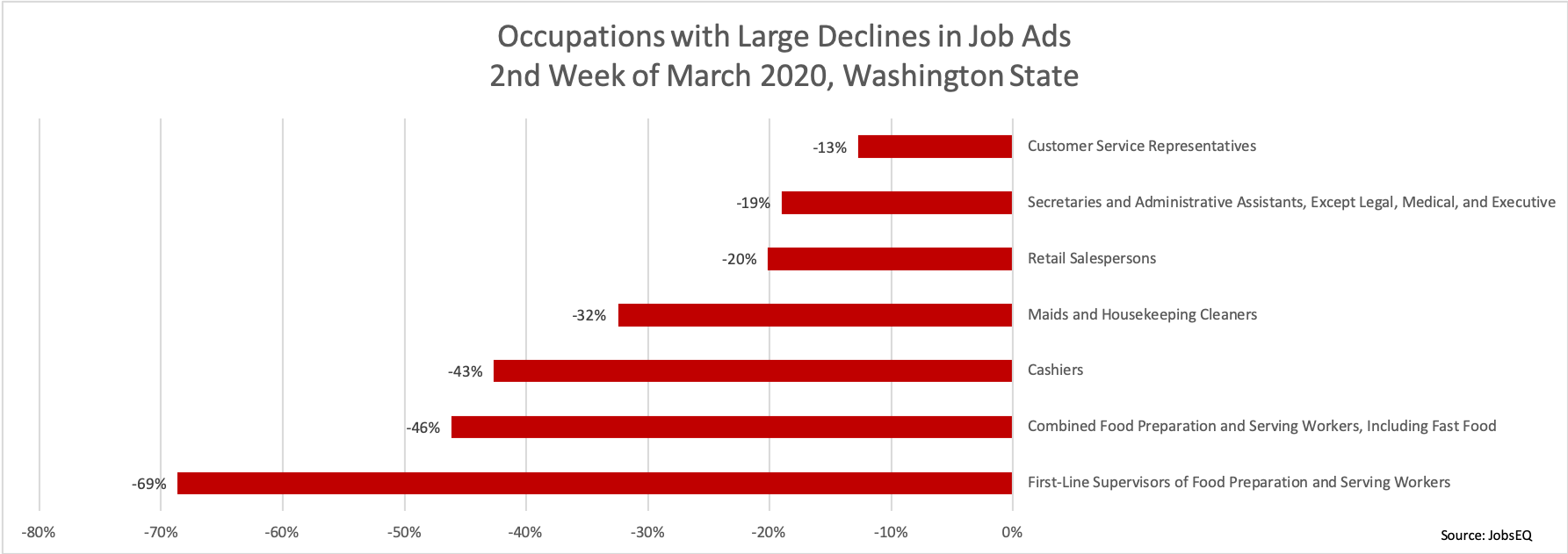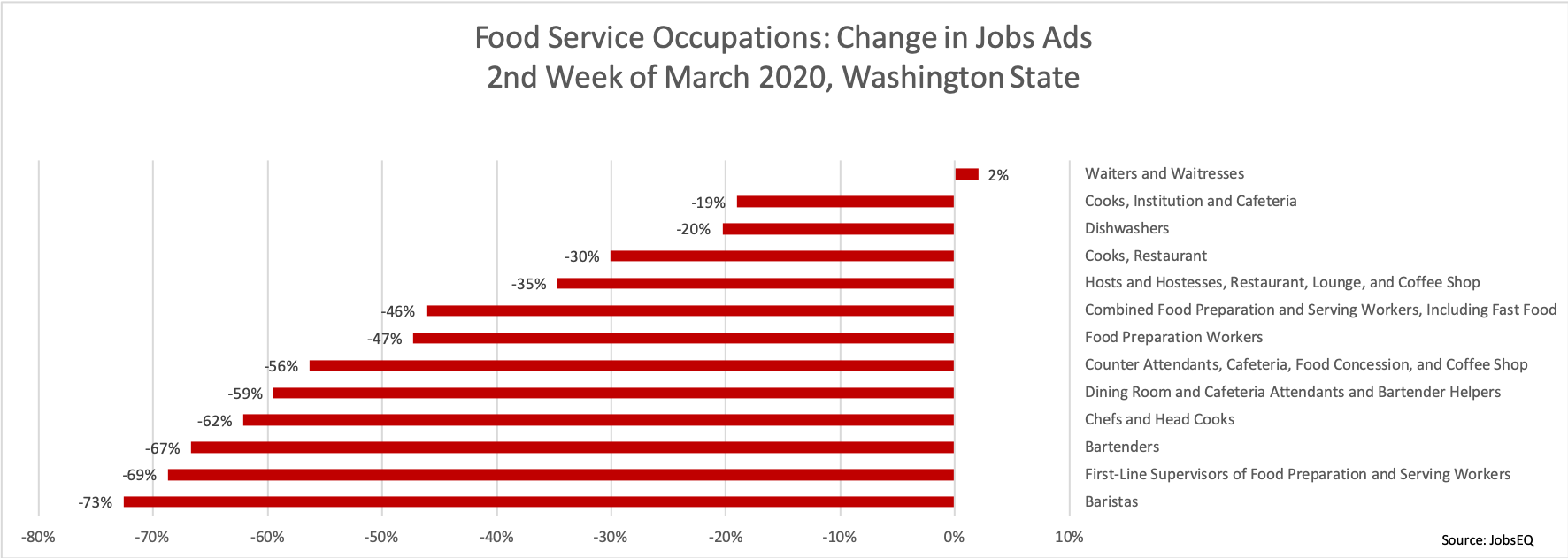On Tuesday, we posted a blog showing the impact the COVID-19 pandemic is having on job trends, comparing the occupation mix of online job ads during the week of March 9-15, 2020 to the occupation mix in March 2019. As one might expect, given the closures and cancellation of events nationwide, occupations in both the food service and accommodation sectors have been especially hard hit. Chmura is here to keep you informed.
In this blog, we are taking a deeper look at these impacts on Washington State, one of the regions that has been hardest hit by the pandemic.

Looking at some of the larger occupations in the state, the same trend that is occurring at the national level is occurring in Washington, where major service sector occupations are experiencing large declines compared to last year. Notably, occupations in food services are getting hit the hardest, much more so than what is seen nationally, with the cashiers and combined food preparation and serving workers occupations seeing declines greater than 40% and first-line supervisors of food preparation and serving workers experiencing a decline of almost 70%.

Looking more specifically at the food services occupations, it is the same story, with six food-related occupations experiencing greater than a 50% decline compared to last year. One anomaly in the data is the waiters and waitresses occupation which shows an increase in ad volume compared to last year. Investigating this occupation further it was discovered that the large majority of these job postings (70%) are coming from a single employer, a large national chain restaurant with many locations. It is likely that these job postings are on an automated system and were scheduled to be posted prior to the current outbreak hitting the region. After accounting for those postings, the waiters and waitresses occupation sees a decline similar to the other food service occupations.
As the situation continues to develop and evolve daily, Chmura will be posting frequent updates to our COVID blogs, using the latest RTI data to monitor and track disruptions to the labor market.
